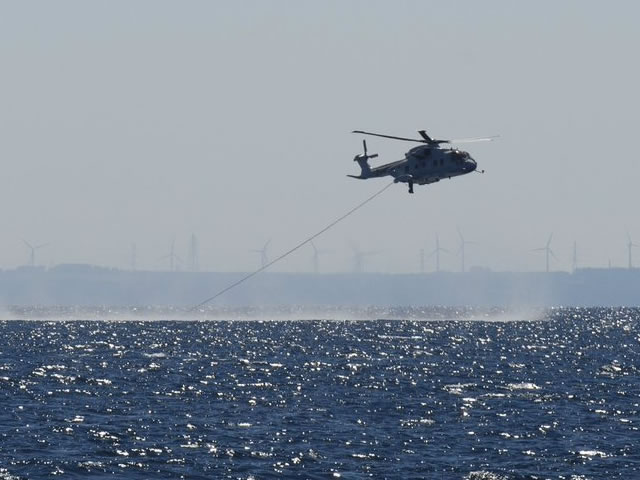|
|
|||
 Mineman 1st Class Zachary Abel deploys a mine neutralization vehicle aboard USS Pioneer (MCM 9), July 26. (U.S. Navy/MC2 William McCann) Mineman 1st Class Zachary Abel deploys a mine neutralization vehicle aboard USS Pioneer (MCM 9), July 26. (U.S. Navy/MC2 William McCann) |
|||
|
|
|||
|
“I am proud of the effort of the entire crew to make 2JA MCMEX a success,” said Lt. Cmdr. Brett Jasionowski, commanding officer, USS Pioneer. “The search techniques of our Minemen and Operations Specialists were superb as we leveraged our sonar capability to provide an accurate picture of mine shapes to the entire force. Working together in partnership with the JMSDF is a privilege, and we all gained from this experience.”
As part of the exercise, a JMSDF and U.S. Navy personnel exchange was conducted to assist both navies in understanding each other’s minesweeping operations and general ship life. JMSDF Petty Officer 3rd Class Higuchi Shoma came aboard Pioneer for four days of the exercise and had the opportunity to conduct mine sweeping and ship handling right alongside his U.S. counterparts. “I feel there is a culture difference between us, but I was happy to help the Pioneer crew,” said Shoma. “The past few days I have gained valuable experience which I will take back to my ship, JS Bungo.” Operations Specialist 1st Class James Delisle, a member of the MCMRON 7 staff, spent the exercise embedded aboard JS Bungo. Reflecting on the experience, he viewed his time on JS Bungo as a prime opportunity to learn from the JMSDF and its approach to mine countermeasures. “It was an absolutely wonderful opportunity to cooperate with and learn from our JMSDF counterparts,” said Delisle. “I look forward to continued partnerships and evolutions to come.” MCMRON 7 and Pioneer are assigned to Amphibious Force 7th Fleet, the Navy's only forward-deployed amphibious force, headquartered at White Beach Naval Facility, Okinawa. |
|||











